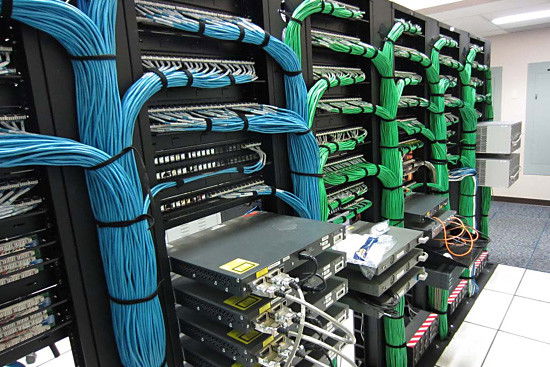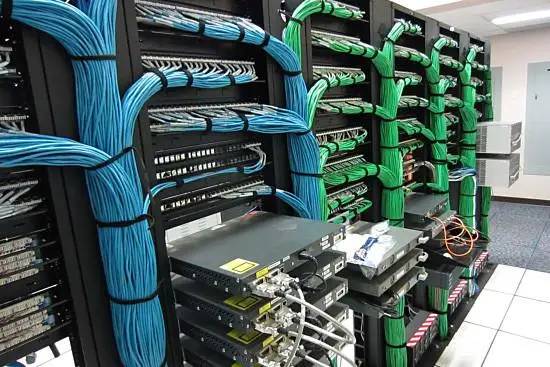
Maximizing efficiency is crucial for businesses to stay competitive. Professional data cabling plays a pivotal role in ensuring seamless and reliable connectivity, which is essential for the smooth operation of various systems and devices.
This comprehensive approach to cabling infrastructure optimizes network performance, enhances data transfer speeds, and minimizes downtime, leading to increased productivity and cost savings. By investing in professional data cabling, organizations can lay a solid foundation for their IT infrastructure, supporting current needs and future scalability. In this introduction, we will explore the key benefits and best practices of professional data cabling, empowering businesses to harness the full potential of their network infrastructure.
Benefits of Professional Data Cabling
Enhanced Speed and Reliability
Having a professional data cabling infrastructure is essential to ensure enhanced speed and reliability. A structured cabling system minimizes downtime, reduces latency, and provides a stable network connection, enabling seamless data transmission and enhancing overall operational efficiency. With the increasing reliance on technology for various business operations, a well-organized cabling infrastructure becomes a competitive advantage, ensuring that businesses can keep up with the demands of modern connectivity.
Improved Network Performance
Professional data cabling not only enhances the speed and reliability of the network but also significantly improves its overall performance. With organized and efficient cabling, businesses experience reduced packet loss, lower signal interference, and improved data security. This leads to a smoother and more responsive network, ultimately boosting productivity and customer satisfaction. Additionally, the improved network performance translates to better utilization of resources, as data can be transmitted and accessed more efficiently, contributing to a more streamlined workflow and optimized business processes.
Scalability and Flexibility
One of the key benefits of investing in professional data cabling is the scalability and flexibility it offers. As businesses grow, their networking needs evolve. A well-designed cabling infrastructure allows for easier expansion and reconfiguration, accommodating new technologies and system upgrades without the need for extensive rewiring. This scalability and flexibility future-proofs the network, saving time and resources while ensuring seamless adaptability to changes in the business environment. Furthermore, it facilitates the integration of advanced technologies such as Internet of Things (IoT) devices and cloud-based services, positioning the business for continued innovation and growth in the digital landscape.
Reliable Infrastructure Foundation
Beyond the immediate benefits of speed, performance, and scalability, professional data cabling establishes a reliable infrastructure foundation that forms the backbone of an organization’s connectivity. By adhering to industry standards and best practices, a structured cabling system ensures long-term reliability, minimizing the risk of network failures and disruptions. This not only safeguards the continuity of business operations but also reduces the potential costs associated with downtime and maintenance, providing a solid return on investment in the long run.
Future-Proofing Business Operations
In an era of rapid technological advancement, the significance of professional data cabling extends to future-proofing business operations. A well-structured cabling network accommodates emerging technologies and evolving communication protocols, positioning businesses to adapt to the changing landscape of digital connectivity. By laying a robust foundation for connectivity, organizations can confidently embrace innovation, seamlessly integrate new solutions, and stay ahead in an increasingly competitive marketplace.
Professional Data Cabling Best Practices
Proper Cable Management
Effective cable management is essential for maintaining a neat and organized cabling infrastructure. It involves securing and organizing cables in a way that facilitates easy maintenance, troubleshooting, and upgrades. Utilizing cable management tools such as cable trays, racks, and cable ties can help in reducing clutter and improving airflow within the networking environment. Proper cable management not only enhances the aesthetics of the setup but also minimizes the risk of accidental damage to the cables, thereby promoting a more efficient and safer working environment.
Compliance with Industry Standards
Adhering to industry standards such as TIA/EIA and ANSI/TIA ensures that the cabling infrastructure meets the necessary performance and safety requirements. Following these standards helps in preventing signal interference, optimizing data transmission, and ensuring the overall reliability of the network. Moreover, compliance with these standards is often a prerequisite for obtaining certifications and warranties, further emphasizing the importance of adherence to these guidelines.
Future-Proofing Infrastructure
Designing the cabling infrastructure with future scalability in mind is crucial for accommodating technological advancements and expansion. This involves using high-quality cabling materials, considering the potential for increased data demands, and implementing flexible solutions that allow for seamless modifications and upgrades. Additionally, future-proofing the infrastructure involves anticipating the convergence of technologies and the increasing need for higher bandwidth, thereby necessitating the implementation of advanced cabling systems that can support these evolving requirements. By strategically planning for future developments, organizations can minimize the need for costly overhauls and ensure that their cabling infrastructure remains robust and capable of meeting the demands of tomorrow’s networking landscape.
Enhanced Security Measures
In addition to the physical layout and organization of cabling, it is imperative to consider security measures to safeguard the data being transmitted through the cables. Implementing secure cabling practices, such as employing encrypted cables and utilizing secure connection protocols, is essential for protecting sensitive information from unauthorized access or interception. Furthermore, incorporating physical security measures, such as access control and surveillance, can prevent tampering or unauthorized access to the cabling infrastructure, adding an extra layer of protection to the network.
Documentation and Labeling
Thorough documentation and proper labeling of cables are fundamental aspects of professional data cabling. Maintaining comprehensive records of cable routes, connections, and configurations simplifies troubleshooting and maintenance tasks, reducing downtime and minimizing the likelihood of errors. Clear and accurate labeling of cables, ports, and equipment facilitates swift identification and management, streamlining installation and ongoing management processes. Additionally, it aids in compliance with regulatory requirements and supports efficient inventory management, contributing to overall operational effectiveness.
Regular Inspections and Maintenance
Conducting regular inspections and proactive maintenance of the cabling infrastructure is essential for identifying and addressing potential issues before they escalate into larger problems. Periodic assessments of cable integrity, connections, and environmental factors ensure early detection of wear, damage, or environmental stress that could compromise the network’s performance and reliability. Scheduled maintenance activities, such as cleaning, testing, and reorganization, help uphold the optimal functionality and longevity of the cabling system, ultimately contributing to sustained operational efficiency and minimized downtime.
Choosing a Professional Data Cabling Partner
Experience and Expertise: The Backbone of Reliable Infrastructure
When it comes to selecting a professional data cabling partner, several crucial factors demand careful consideration to ensure the best outcome for your business. One of the foremost among these is the experience and expertise of the cabling partner. A reliable partner should boast a proven track record within the industry, demonstrating a portfolio of successful projects and a team of seasoned professionals. This foundation of experience and expertise forms the backbone of a reliable and robust infrastructure.
Quality of Materials and Installation: Ensuring Long-Term Performance
Equally vital is the assessment of the quality of materials and installation techniques employed by the cabling partner. High-quality materials and precise installation processes are not only essential for the reliability but also for the long-term performance of the data cabling infrastructure. The durability and efficiency of the entire network rely significantly on the quality of materials and the expertise applied during installation.
Customer Support and Service Level Agreements: A Pillar of Assurance
Moreover, customer support and service level agreements play a pivotal role in the selection process. A reputable cabling partner should offer excellent customer support, responsive communication, and robust service level agreements to ensure prompt assistance and ongoing maintenance when needed. This pillar of assurance reinforces the reliability and functionality of the entire cabling network, providing peace of mind to businesses.
In addition to these critical factors, it is important to consider the adaptability and scalability of the cabling partner’s solutions. As businesses grow and technology evolves, the data cabling infrastructure must be able to accommodate these changes seamlessly. A professional partner should offer scalable solutions and future-proof designs that can adapt to the evolving needs of the business without requiring extensive overhauls or disruptions.
Furthermore, adherence to industry standards and regulations is non-negotiable when selecting a data cabling partner. Compliance with industry standards not only ensures the quality and safety of the infrastructure but also mitigates potential risks and liabilities for the business. It is imperative to verify that the cabling partner follows industry best practices and complies with relevant regulations and certifications.
It is also beneficial to assess the innovative capabilities of the cabling partner. A partner that stays abreast of emerging technologies and trends can offer valuable insights and solutions that optimize the performance and efficiency of the data cabling infrastructure. Their ability to integrate innovative solutions and future technologies into the current infrastructure can provide a competitive edge and long-term value for the business.
By carefully evaluating and prioritizing these factors, businesses can make an informed decision when choosing a professional data cabling partner. The right partner can not only ensure the seamless implementation and operation of the cabling infrastructure but also contribute to the overall efficiency and productivity of the business operations, making it a strategic investment for the future.
Professional data cabling is essential for maximizing efficiency in any modern business or organization. By investing in high-quality and well-organized data cabling infrastructure, businesses can ensure seamless connectivity, faster data transfer, and reduced downtime. This ultimately leads to improved productivity, cost savings, and a more streamlined work environment. Therefore, it’s clear that professional data cabling is a crucial component for businesses looking to stay competitive in today’s digital age.






